Keynote speakers
molly cummings
The past, present and future of sensory drive: predicting signal variation from the seen to the unseen
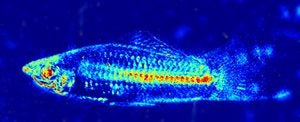
Abstract
It has been 25 years since John Endler introduced the concept of Sensory Drive into studies of sexual selection. This game-changing idea provided new ways of predicting the direction of communication trait evolution across taxa. In the succeeding decades, researchers working with a variety of taxa and across sensory modalities have provided a large body of evidence for these processes at play in both sexual and natural selection, and have further identified the specific physiological mechanisms governing these processes. Here, I will give a brief review of the compelling body of research in this field, identify whether the evidence lay more heavily in certain habitats or modalities, as well as share some examples of how these concepts have enabled discovery of signaling and concealment traits within a sensory realm that is largely undetectable by humans (e.g. polarized light).
marcus r. kronforst
Characterizing the link between mimicry and mate choice in Heliconius butterflies
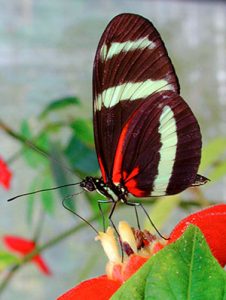
Abstract
Genetic covariance between mating cues and preferences, or genetic coupling, is widespread and evolutionarily important but its underlying molecular genetic cause remains unknown. By combining fine-scale genetic mapping, genome-wide association studies, gene expression analyses, population and comparative genomics, and genome editing with CRISPR/Cas9, we have characterized the molecular basis of a wing color mating cue in Heliconius butterflies and its genetic association with mate preference. Here, I will present our recent results showing that color diversity in the butterfly Heliconius cydno is due to alternate haplotypes at a narrow cis-regulatory element (CRE) downstream of a tandem duplication of the homeodomain transcription factor aristaless. Mate preference is associated with a tightly-linked but separate gene. Contrary to predictions, we find that genetic coupling is a result of linkage and selection and not pleiotropy or structural genomic variation. These observations reveal the functional molecular mechanisms responsible for genetic coupling and the origin of species more generally.
Presenters
natasha bloch
Evolution and genetic basis of color perception and color preferences

Abstract
Understanding the evolution of color and how it relates to mate choice requires understanding how colors are perceived and the mechanisms underlying mate preferences for colorful traits. I have focused on the study of the genetic elements underlying color perception and color preference in the eye and the brain.
Using a comparative approach in birds, I studied the evolution of visual pigments in New and Old World warblers relative to each species’ nuptial traits and habitat. I studied opsin genes sequence evolution and corresponding spectral sensitivity, as well as opsin expression across warbler species. I found evidence opsin gene expression evolves quickly and in response to sexual selection while visual pigment sequence and function evolve slowly and for some pigments in response to habitat.
I then moved on to study the mechanisms of color perception and preference beyond the eye, in the brain of female guppies with and without preference for colorful males. I found genes associated with female preference in both a sensory component (optic tectum), and a decision-making component (telencephalon) of the brain. Analyzing these genes in the context of co-expression networks for each tissue revealed the modularity of the transcriptional response of female preference, and different response patterns in the decision-making and the sensory processing levels. These results have important implications for the nature of mate choice, uncovering the upstream neurogenomic elements underlying variation in female preference.
courtney fitzpatrick
The evolution of colorful females; a model for social evolution
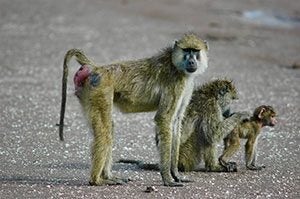
Abstract
The evolution of exaggerated coloration in male animals has long been an area of active research. It is now well understood that competition for reproductive opportunities (i.e. sexual selection) usually drives the evolution of bright colors in males. However, empirical studies now report numerous examples of exaggerated coloration in female animals. Furthermore, exaggerated female colors are often found in species where female fecundity is not limited by access to males and therefore females should be immune to sexual selection. Nonetheless, colorful females have evolved across taxa. These traits in females tend to share one important features of the analogous traits in males: they are usually related to reproduction. However, they differ in several ways from the common patterns of exaggerated color in males. In particular, my research (both empirical and theoretical) suggests that females may not evolve bright colors not to directly increase their fecundity, but rather to obtain socially mediated fitness benefits (e.g. protection from predation or paternal care). In this case, “social selection” may explain a large swath of poorly understood biodiversity (exaggerated female coloration). In turn, the study of exaggerated coloration in female animals represents a powerful model for understanding how variation in the social landscape shapes trait evolution more generally.
matt koski
Abiotic drivers of floral pigmentation diversity
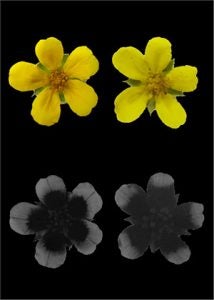
Abstract
Pigmentation phenotypes play critical roles in both organismal communication as well as amelioration of abiotic stress. For example, floral coloration can mediate plant-pollinator interactions, and protect gametes from thermal or UV stress. While strong support exists for pollinators as drivers of variation in floral pigmentation, only recently has compelling evidence for a similar role of the abiotic environment emerged. I will discuss empirical examples of how variation in ultraviolet flower color patterning and pollen coloration are shaped by the abiotic environment. In the globally distributed herb, Argentina anserina, variability in ultraviolet pigmentation corresponds strongly with ambient UV irradiance. Manipulative experiments and comparative approaches support UV irradiance as a driver of floral pigmentation diversity both within a species and among lineages in a diverse angiosperm radiation. In another example, the pigmentation of pollen grains in the herb Campanula americana displays pronounced variation from white to deep purple. Climatic association and manipulative experiments support that elevated pigmentation provides heat tolerance and geographic patterns of summer temperatures may drive geographic patterns in pigmentation. Interestingly, both UV pigmentation and pollen pigmentation affect pollinator visitation behaviors. I will discuss how globally changing abiotic conditions could constrain or promote adaptation of floral color to pollinators.
ricardo mallarino
How the mouse got its stripes: evolution and development of pigment patterns in rodents
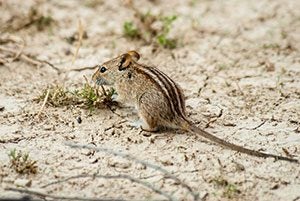
Abstract
Mammalian color patterns are among the most conspicuous characters found in nature and can have a profound impact on fitness. However, little is known about the mechanisms underlying their formation and subsequent evolution. We capitalized on the naturally occurring color pattern of the African striped mouse, Rhabdomys pumilio, to investigate the formation of periodic stripes, a common pigment pattern in mammals. In striped mice, stripes result from underlying differences in melanocyte maturation, which give rise to spatial variation in hair color. Through transcriptomic analyses of the developing skin, we identified the transcription factor Alx3 as a major hierarchical regulator. During striped mouse embryogenesis, patterned expression of Alx3 precedes pigment stripes and acts to directly repress Mitf, a master regulator of melanocyte differentiation. Moreover, Alx3 is also differentially expressed in the dorsal stripes of chipmunks, which have independently evolved a similar color pattern. Thus, differences in the spatial control of Alx3 lead to striped patterns in rodents, revealing both a new factor regulating pigment cells and a previously unappreciated mechanism for modulating hair color. I’ll end by discussing how my lab, through a variety of multidisciplinary approaches, uses stripe pattern formation as a model to uncover molecular mechanisms underlying evolutionary innovations.
julienne ng
Flower color evolution: pattern and process at the macroevolutionary scale
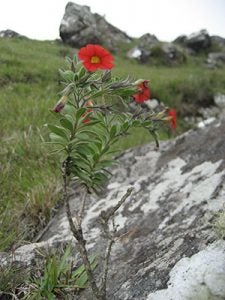
Abstract
Understanding the factors that drive patterns of diversity across the tree of life has long been a goal in evolutionary biology. For example, why are some traits common while others remain rare? My research investigates the processes underlying macroevolutionary patterns of color diversity by integrating phylogenetic approaches, anatomical data and biochemical data. In this talk, I will focus on the evolution of flower color using the tomato family (Solanaceae) as a model system. I examine the mechanisms by which different pathways and pigments contribute to flower color evolution, and whether the evolution of flower color affects diversification rates. I will show that phenotypic convergence is not always associated with convergence at the biochemical level, the structure of the underlying pigment pathway constrains flower color to evolve in a stepwise manner, and that red flowers are an evolutionary dead end.
beth reinke
Drivers of color diversity: interspecific and intraspecific variation in butterflies and turtles
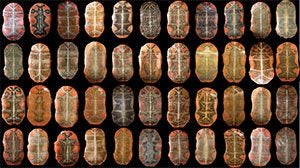
Abstract
Interspecific and intraspecific color diversity is often attributed to functional differences in the fitness consequences of coloration. In most cases, interspecific diversity is assumed to be driven by signals providing receivers with species-specific information, while intraspecific variation is attributed to environmental or geographic differences that impact the efficacy of signal transmission. For example, the exceptional interspecific color diversity of Nymphalid butterflies can be attributed to the differential strengths of various selective pressures impacting colorfulness. Using macroevolutionary analyses of colorfulness, these relative strengths can be assessed within species to elucidate the evolution of color across taxa. However, when there is a cost to producing a coloration but no known signaling function, variation can be trickier to explain. For example, the plastron coloration of painted turtles, Chrysemys picta, is energetically costly to produce but shows a high level of geographic variation. Using visual modeling and experiments, I found that this coloration does not have a signaling function, but that the pigments appear to play a significant role in mitigating oxidative stress during somatic freezing. In this case, the physiological function of integumentary pigments can significantly impact the survival of the animal and can explain intraspecific diversity.
marketa zimova
Camouflage mismatch in seasonally color molting species
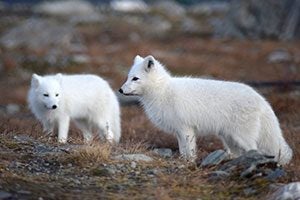
Abstract
Every year, 21 species of birds and mammals undergo seasonal coat color molt from brown in the summer to white in the winter. This complete change in color phenotype enables snowshoe hares, Arctic foxes and other color molting species to avoid detection by their predators or prey. However, climate change results in shortening duration of snow cover across majority of the northern hemisphere, and consequently in mismatch in camouflage between white animals and dark snowless backgrounds. Two urgent questions arise; first, what are the fitness consequences of camouflage mismatch on wild populations, and second, what is the potential for local adaptation through phenotypic plasticity and evolution? I first describe the function and the underlying molecular and endocrine basis of seasonal color molts in mammals and birds. Next, I show that snowshoe hares suffer high fitness costs due to mismatch and that in the absence of adaptation, it will lead to hare population declines by 2100. Lastly, I explore the adaptive potential to mismatch via phenotypic plasticity in molt phenology and evolutionary shifts in mountain hares and Arctic foxes. My research concludes that due to high fitness costs and limited plasticity in seasonal molt phenology, behaviors and winter color phenotype in most color molting species, evolutionary adaptation will be necessary to mediate future camouflage mismatch under climate change.


